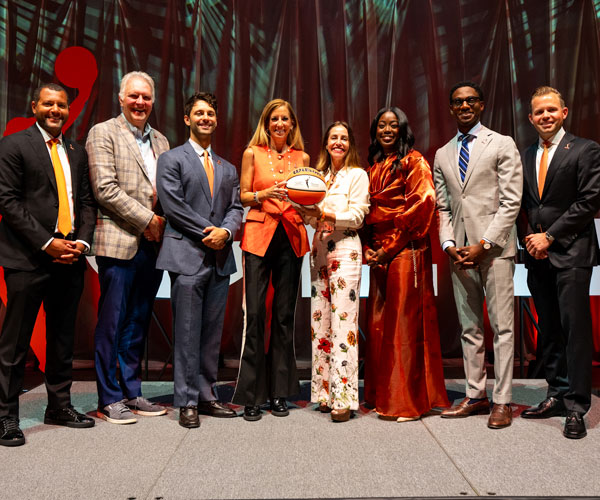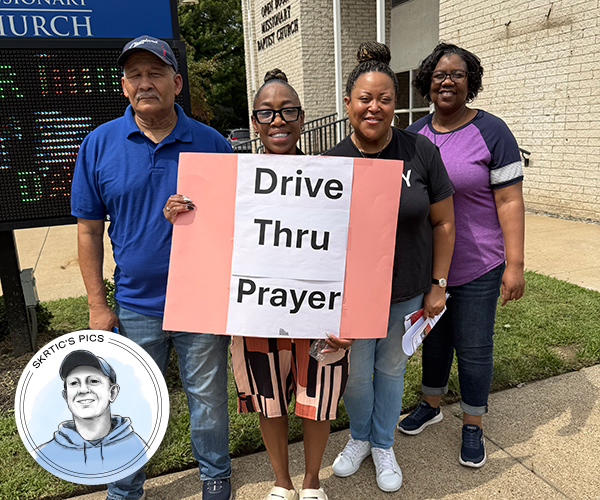We all know the refrain. The East Side is blue blood, cultured, liberal, diverse. The West Side is blue collar, new money, conservative, ethnic, white. East Side streets are impossible to navigate. The West Side has no character. East Side means shopping, good schools and high society. West Side means bowling, neighborhood bars and big hair.
Isn't it time someone threw the first spadeful of dirt on these stereotypes? As someone who has lived on both sides of town, I'm well acquainted with our continental divide. The wide Cuyahoga Valley — with its steep slopes, sheltered lowlands and narrow river — runs deep, both topographically and psychologically. As the transition between the Allegheny Plateau and the Great Plains, it puts some teeth in the old saw that the West Side is really the Midwest and the East Side is the East Coast.
But all too often I've heard, "It's just different over there," as if a trip across I-480 transports you into a foreign country, complete with passport jokes.
When a young woman griped at a recent Case forum that West Siders refuse to venture across town for anything — except the occasional visit to the Cedar Lee or Legacy Village — I wanted to stand up and say, "Here I am. Drove all the way over from West Park. Didn't even get lost. And guess what? It's not my first time."
But a panelist beat me to it: "And now they're building Crocker Park in Westlake," he noted. "So they don't ever have to come to this side of town."
Ah, I get it now. This glorified shopping mall is a West Side conspiracy hatched to keep us from driving 35 minutes for cheesecake or even for something that actually matters, like gathering in the inspiring Frank Gehry-designed Weatherhead Building to foster new relationships.
Is that how insular we've become? So content in our little cul-de-sacs that we refuse to slip across town to experience the other side's truly unique assets or acknowledge that we aren't really all that different?
Lakewood and Cleveland Heights, for instance, are pretty similar. With roads laid down along former streetcar lines and nightlife mixed into neighborhoods, they offer young singles back from college and the newly married an energetic mix of near-mansions, wood-floored colonials and character-filled apartment buildings with stately names. And while Coventry has been filled with bohemian street life since Cleveland's dark days, when there was nowhere else fun to go, Lakewood's Madison Avenue, east of Bunts Road, has an equally strong mix of freaky boutiques, ethnic restaurants and stylish bars.
The comparisons don't stop there.
Westlake and Solon are both emerging communities with an influx of new money, big homes, strong schools, moderate taxes and hardwired convenience. Whether it's a monster community center, big-box shopping or family entertainment, you'll find it in abundance in both towns.
And on Cleveland's eastern and western fringes alike, we're grabbing farm after farm, transforming exurbs such as Avon and Chardon into boomtowns bursting with development around a historic core.
Our neighborhoods already defy the stereotypes. In Little Italy, only one in five residents is Italian now. College students are transforming it into a campus neighborhood and young Asian faces are common.
My West Park neighborhood has become far more diverse over the past five years: A simple two-block stretch along Lorain Road offers a newly renovated Irish pub, an Italian restaurant, a hipster coffee shop and a Middle Eastern bakery.
Our city's younger residents traverse easily between East and West, whether for entertainment, enrichment or simply something new.
We are all Cleveland. Our two sides are like two halves of a brain: a few different impulses, but they mostly think the same things. Our Midwestern friendliness, our history, our survivor's pride in our battered but character-filled city unite us.
And though there remains a racial divide, we have an opportunity to overcome that gap by getting over our stereotypes, crossing the bridges and celebrating those differences that do make each side of town unique.
For a time, in our nation's infancy, the Cuyahoga Valley was the western frontier. Filled with promise, we raised industry, neighborhoods and wealth here. Now, we must once again advance into new territory, letting the footprints of our crossing obliterate the false frontiers that we've allowed to stand for far too long.
What unites us runs deeper than what divides us.



